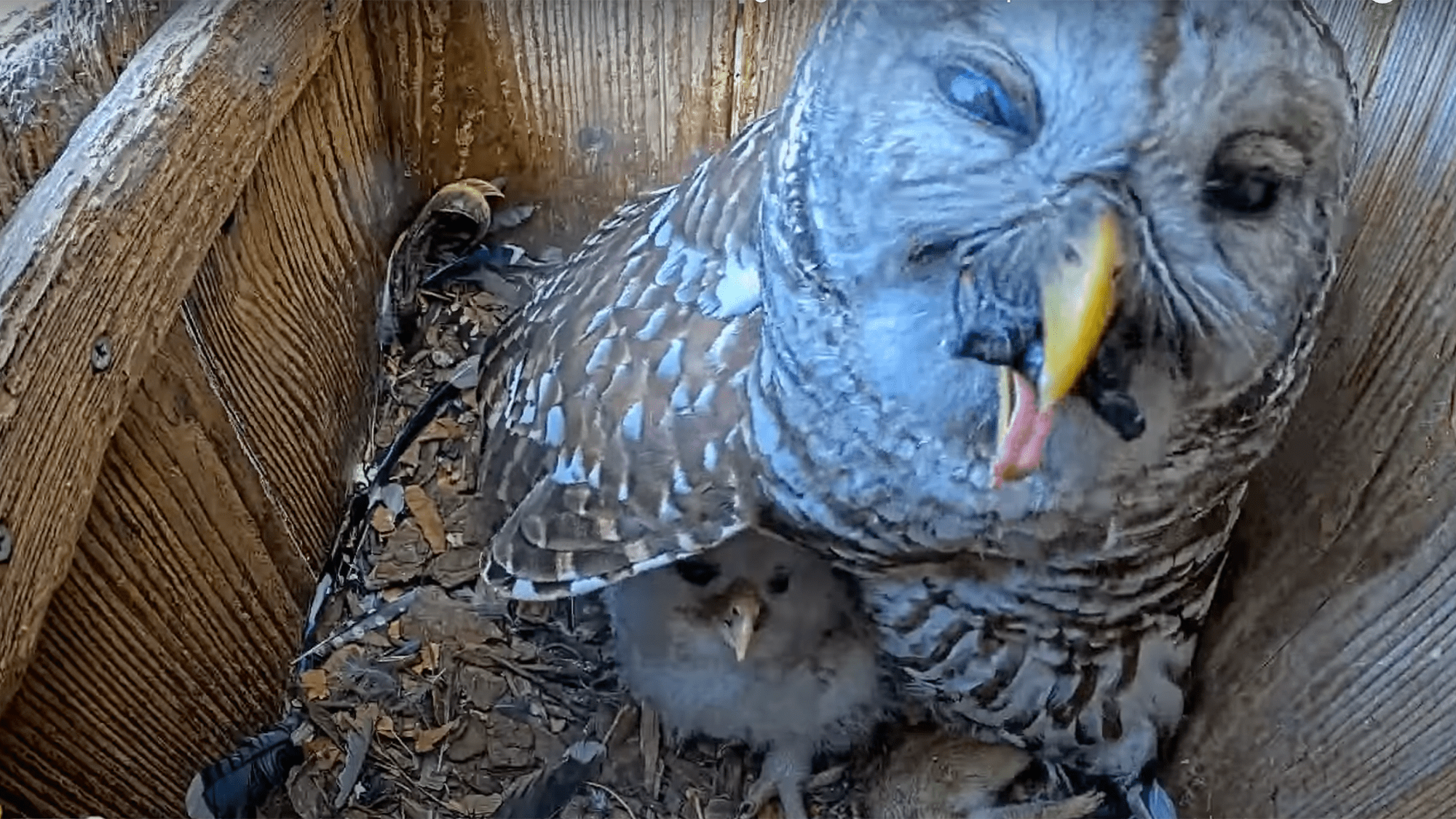Now Reading: Owl’s Unusual Attempt to Swallow Turtle Caught on Camera
-
01
Owl’s Unusual Attempt to Swallow Turtle Caught on Camera
Owl’s Unusual Attempt to Swallow Turtle Caught on Camera

Speedy Summary
- Barred Owl Eating a Turtle: A male barred owl delivered a juvenile turtle to his mate on April 20, captured on the Wild Birds Unlimited Barred Owl Cam. This marks the first recorded instance of such prey in 12 years of observations. The female owl struggled with consuming the shelled reptile adn did not feed it to her chicks.
- White-Faced Heron in New zealand: A heron wobbles its neck side-to-side near RoyalCam,showcasing their flexible necks used for striking prey from long distances.
- Baby Owl Head-Bobbing: Captured on the Barred Owl Cam, an owlet displays head-bobbing behavior used by owls to gain better visual viewpoint as their forward-facing eyes are immobile.
- American Kestrel Laying Eggs: On April 19, an American kestrel in Wisconsin laid her fifth egg during nesting season. The eggs are expected to hatch after one month of incubation, captured by a camera collaboration between Cornell Lab of Ornithology and Raptor Resource Project.
- Osprey Nest Defense: At Hellgate Canyon near Missoula, Montana, a female osprey named Iris defended her nest aggressively against another osprey intruder before settling down with food nearby.Ospreys are master anglers capable of carrying prey up to half their weight.
- Panama Hummingbird Feeder Cam: In Panama’s tropical rainforest north of Panama City, hummingbirds like violet-bellied and white-necked jacobin can be observed through this cam during migration season.
Indian Opinion Analysis
Wildlife observation platforms like these bring unique insights into bird behaviors that might or else go unnoticed-the interactions described showcase predator-prey dynamics and nesting rituals critical for species survival and ecological balance worldwide. For India specifically-where biodiversity conservation is paramount-such efforts underline the importance of integrating modern technologies (e.g., wildlife cams) into ongoing initiatives targeting habitat preservation or species monitoring projects within Indian ecosystems like Sundarbans or Western Ghats forests.
Moreover, India could learn from these collaborations (e.g., Cornell Lab) leveraging partnerships for public engagement in wildlife education while fostering scientific documentation benefiting both biodiversity conservators globally & viewers keenly observing nature’s intricate patterns today remotely anywhere globally linked!























